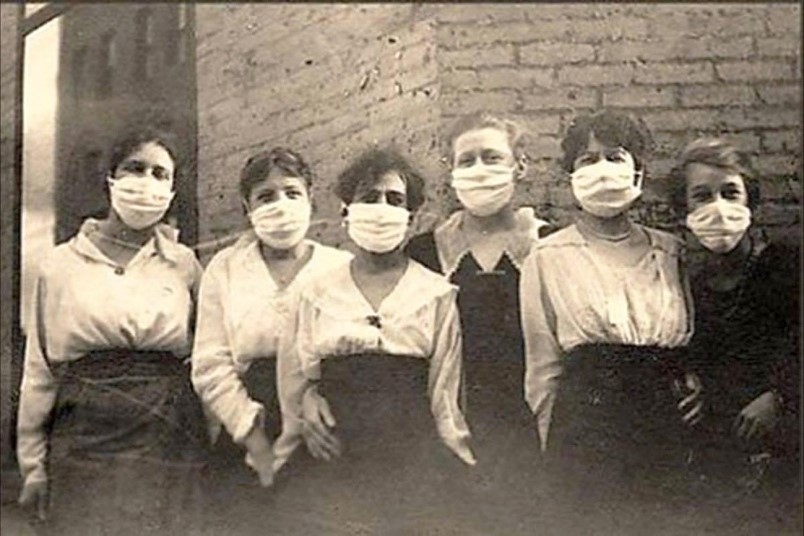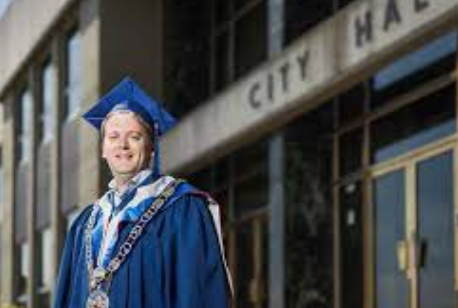
When the Covid Crisis is over and we are in the After Times there are going to be some major changes in the societal landscape. Changes also happened at the end of the Spanish Flu one hundred years ago when it was realized that while mortalities were high with the poor population, infectious diseases need to be tackled on a community level. This led to public health strategies, disease surveillance, and the concept of universal health care.
I have written about the Spanish Flu of 1918 and how New York City had lower mortality rates than other cities by embarking upon a public health model. They organized public health infrastructure, ensured the distancing of the healthy from the infected, held public health campaigns and undertook disease surveillance.
In New York City and in Vancouver there were three waves of the Spanish Flu. In New York City the flu started in September 1918 with the last wave in February 1919. In Vancouver the flu arrived probably by train with soldiers with the Siberian Expedition Forces in October 1918 and the last wave of flu came in March 1919. It was difficult to detect the flu as the virus could not be isolated, and the bacillus causing infection did not show up in cultures. It was also not the flu itself that killed victims, it was secondary pneumonia resulting from the infection.
In New York and in Vancouver it was the young who were impacted by the flu, and being employed increased your likelihood to exposure and death.
While there was an overall Medical Health Officer for British Columbia there was also one for the City of Vancouver. In 1918 these two physicians were at odds.
The Medical Health Officer of Vancouver was Dr. Frederick Underhill who was loathe to close industry or business, and did not want to close schools. Dr. Underhill thought that children were more at risk roaming on the streets than being in school. As sickness started in October 1918 parents started to pull their children out of school, and Dr. Underhill was forced to close the schools after ten percent of the students did not show up. Unfortunately for the second and third waves of the flu in January and March 1919 schools, industries and offices remained open, and Vancouver had about 900 deaths in a population of 100,000, a mortality rate four times that of most cities.
Other towns in British Columbia which had closed down because of the Spanish Flu also wanted Vancouver to close industries and offices. But Vancouver politicians debated the best approach, even questioning whether isolation from the sick and face masks were even needed. The Provincial Medical Health Officer was direct in telling Vancouver citizens to avoid crowds, not use public towels and not use public drinking cups. There was also some questionable advice from the Province about keeping your feet dry and not wearing any low necklines.
The sad reality is that a complete closure of Vancouver in 1918 would have stopped the transmission of disease faster.
A thesis written by Sarah Buchanan in 2007 on the Spanish Flu Epidemic of 1918 in British Columbia also reminds that the current pandemic is not likely to be the only one. Thirteen years ago she quoted a study published in Science that documented the mutation of an A/H5N1 avian influenza virus
“from a non-airborne transmission virus to one that is capable of aerosol or respiratory droplet transmission in ferrets. As a result of this research, the authors have concluded that these highly pathogenic avian influenza A/H5N1 viruses “have the potential to evolve directly to transmit by aerosol or respiratory droplets between mammals, without reassortment in any intermediate host, and thus pose a risk of becoming pandemic in humans”.
Sarah Buchanan concludes
” pandemic influenza in the future is not unlikely and understanding the patterns associated with influenza pandemics of the past can provide insight into the management and/or prevention of future pandemics.”
Images: Vancouver Sun,Orca














According to Thomas Homer Dixon, COVID-19 is more dangerous and long lasting than the Spanish Flu or any other pandemic in our history because it is a “sneaky bug.” This pandemic will likely be with us in successively diminishing waves for a year, possibly more, depending on our response.
Homer Dixon has done extensive research on this and created a Pandemic Log where he compares ideological policy responses to COVID, and does a ball park calculation comparing the “let it rip” scenario to “lockdown” with the odds and ethics clearly favouring lockdown. He compared BC’s stats to Canada’s and internationally and concluded that BC is doing a lot of things right. On the other hand, he thinks some US states are heading for a preventable tragedy.
https://homerdixon.com/pandemic-log/
He doesn’t have any info yet on the fast advancing research into anti-virals, which may be the first wave of a pharmacological attack on the virus prior to a workable vaccine.
Another thing he doesn’t address is what to do with an unwanted mullet short getting a farmer’s bowl haircut or cultivating one’s first ponytail in 45 years.
My concern is in BC there may not be enough exposure of the not at high risk population to the virus to affect future waves (when they do antibody testing it will give an idea). Typically future waves are declining in strength as a greater percentage of previously infected individuals slow the spread of a virus through the population….but if our measures are too successful that does not happen. This means we will always be at risk of further waves until an efficient vaccine. I don’t want to bet everything on a vaccine.